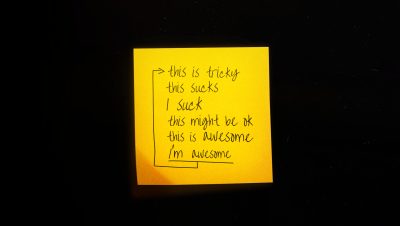I redesigned my website. Join me as I share the challenges I faced by providing 5 actionable tips that will hopefully empower fellow designers, illustrators, and creatives, in case you are considering a personal website overhaul yourself.
Ah, the joys of a website redesign. As a designer, illustrator, or other form of creative, you know the feeling of needing to present your work in the best possible light. But as a designer, illustrator or other form of creative you know the struggle of designing something not for a client, but for yourself. So how can we get around this issue with a handful of actionable tips…
1. Avoid the fallacy of perfection by treating yourself like a client
It is better to update your website or portfolio projects every now and then, than not showcasing your work for years. I mean, we can always come back and improve things later. So maybe consider treating your own projects more like client work. You wouldn’t tell your client week after week after week “It’s not perfect yet”. You would do what has the biggest impact first and then do as much polishing and perfecting as the budget or time allows. Stick with the proven 80:20 mentality.
2. Don't use sandpaper to saw. If you find yourself doing so, stop!
Speaking of the 80:20 mentality, my apprentice master carpenter used to say, “Work with the coarsest possible tool.” The process of going from a tree trunk to a table involves several steps, from the table saw to the bench plane, from the file to the sandpaper. It’s important not to jump too quickly to the next step, as each coarser tool accomplishes the work of the next finer one much faster. The most important step is to catch yourself in the act. So, the next time you find yourself pushing pixels while there are still strategic questions to be resolved, it might be better to stick with Post-Its or wireframes instead of diving into code or creating nice designs and wasting time.
3. Take your time, don't waste it, with short flow sprints.
We should value our time because it’s typically the first thing we tend to sacrifice over quality when working on things for ourselves. What worked well for me was setting aside short’ish dedicated time slots that had a clear topic and goal. This way I combined tip 1 and 2 in a flow inducing way – which felt great.
4. Ask for feedback often... seriously.
When working with others we constantly make decisions based on our experience, data and logic, to convey those decisions with good arguments to the client or other teams. But when working for yourself, we enter a wonderful but dangerous world of “I can do what I want”. Feels great but you lose track quickly when working with this feeling without asking others for feedback. So enjoy the feeling of not having to pitch and have client’s “buy in” on an idea. But we should still make sure we work on things that work.
- Watch people that are like your target audience use your website (of course on mobile and desktop)
- Send it out to close designer friends asking for 80:20 feedback, like the biggest flaws with the greatest impact - which makes the feedback quick to do and values their time
5. Get help...
I guess the saying goes the tailor’s children always wear patched clothes, right? When being a designer, and working on your own website, I’ve seen and experienced many times that we struggle the most with what we normally love doing. If you can save time by buying a really nice website template as a starting point – because you and I know you wont take it as is – really seems worth it. I at least seemed to be so cheap when it came to buying something I probably can design myself just fine, without thinking about how much those 50 bucks will actually save me. Even getting another professional to do your redesign completely might be an option. You know it will cost you, but you know best how much it will save you.
- Really consider using a website service such as wordpress, squarespace, or webflow
- Consider getting a premium template as a starting point
- But stay away from agencies for your personal website, which most likely be overkill
Conclusion
When redesigning your website: Get things done, and rather update or improve later over perfectionism. Don’t skip steps and always work from rough to defined, not vice versa. Use short flow sprints to use your time effectively and reduce drag. Ask relevant people for quick feedback about the one biggest issue they see and improve according to weighing effort vs. impact. Get help and cut corners if you can afford it – sometimes this means buying a template, not designing everything from scratch or hiring a fellow professional.




